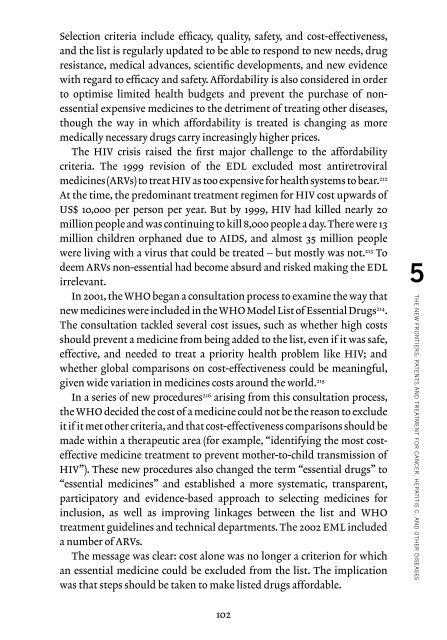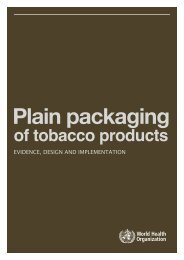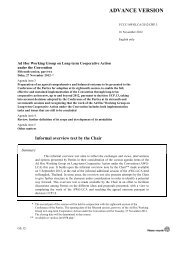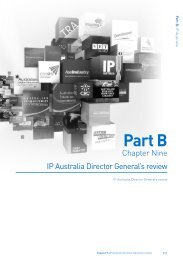PRIVATE PATENTS AND PUBLIC HEALTH
private-patents-and-public-health
private-patents-and-public-health
You also want an ePaper? Increase the reach of your titles
YUMPU automatically turns print PDFs into web optimized ePapers that Google loves.
Selection criteria include efficacy, quality, safety, and cost-effectiveness,<br />
and the list is regularly updated to be able to respond to new needs, drug<br />
resistance, medical advances, scientific developments, and new evidence<br />
with regard to efficacy and safety. Affordability is also considered in order<br />
to optimise limited health budgets and prevent the purchase of nonessential<br />
expensive medicines to the detriment of treating other diseases,<br />
though the way in which affordability is treated is changing as more<br />
medically necessary drugs carry increasingly higher prices.<br />
The HIV crisis raised the first major challenge to the affordability<br />
criteria. The 1999 revision of the EDL excluded most antiretroviral<br />
medicines (ARVs) to treat HIV as too expensive for health systems to bear. 212<br />
At the time, the predominant treatment regimen for HIV cost upwards of<br />
US$ 10,000 per person per year. But by 1999, HIV had killed nearly 20<br />
million people and was continuing to kill 8,000 people a day. There were 13<br />
million children orphaned due to AIDS, and almost 35 million people<br />
were living with a virus that could be treated – but mostly was not. 213 To<br />
deem ARVs non-essential had become absurd and risked making the EDL<br />
irrelevant.<br />
In 2001, the WHO began a consultation process to examine the way that<br />
new medicines were included in the WHO Model List of Essential Drugs 214 .<br />
The consultation tackled several cost issues, such as whether high costs<br />
should prevent a medicine from being added to the list, even if it was safe,<br />
effective, and needed to treat a priority health problem like HIV; and<br />
whether global comparisons on cost-effectiveness could be meaningful,<br />
given wide variation in medicines costs around the world. 215<br />
In a series of new procedures 216 arising from this consultation process,<br />
the WHO decided the cost of a medicine could not be the reason to exclude<br />
it if it met other criteria, and that cost-effectiveness comparisons should be<br />
made within a therapeutic area (for example, “identifying the most costeffective<br />
medicine treatment to prevent mother-to-child transmission of<br />
HIV”). These new procedures also changed the term “essential drugs” to<br />
“essential medicines” and established a more systematic, transparent,<br />
participatory and evidence-based approach to selecting medicines for<br />
inclusion, as well as improving linkages between the list and WHO<br />
treatment guidelines and technical departments. The 2002 EML included<br />
a number of ARVs.<br />
The message was clear: cost alone was no longer a criterion for which<br />
an essential medicine could be excluded from the list. The implication<br />
was that steps should be taken to make listed drugs affordable.<br />
5<br />
THE NEW FRONTIERS: <strong>PATENTS</strong> <strong>AND</strong> TREATMENT FOR CANCER, HEPATITIS C, <strong>AND</strong> OTHER DISEASES<br />
102






